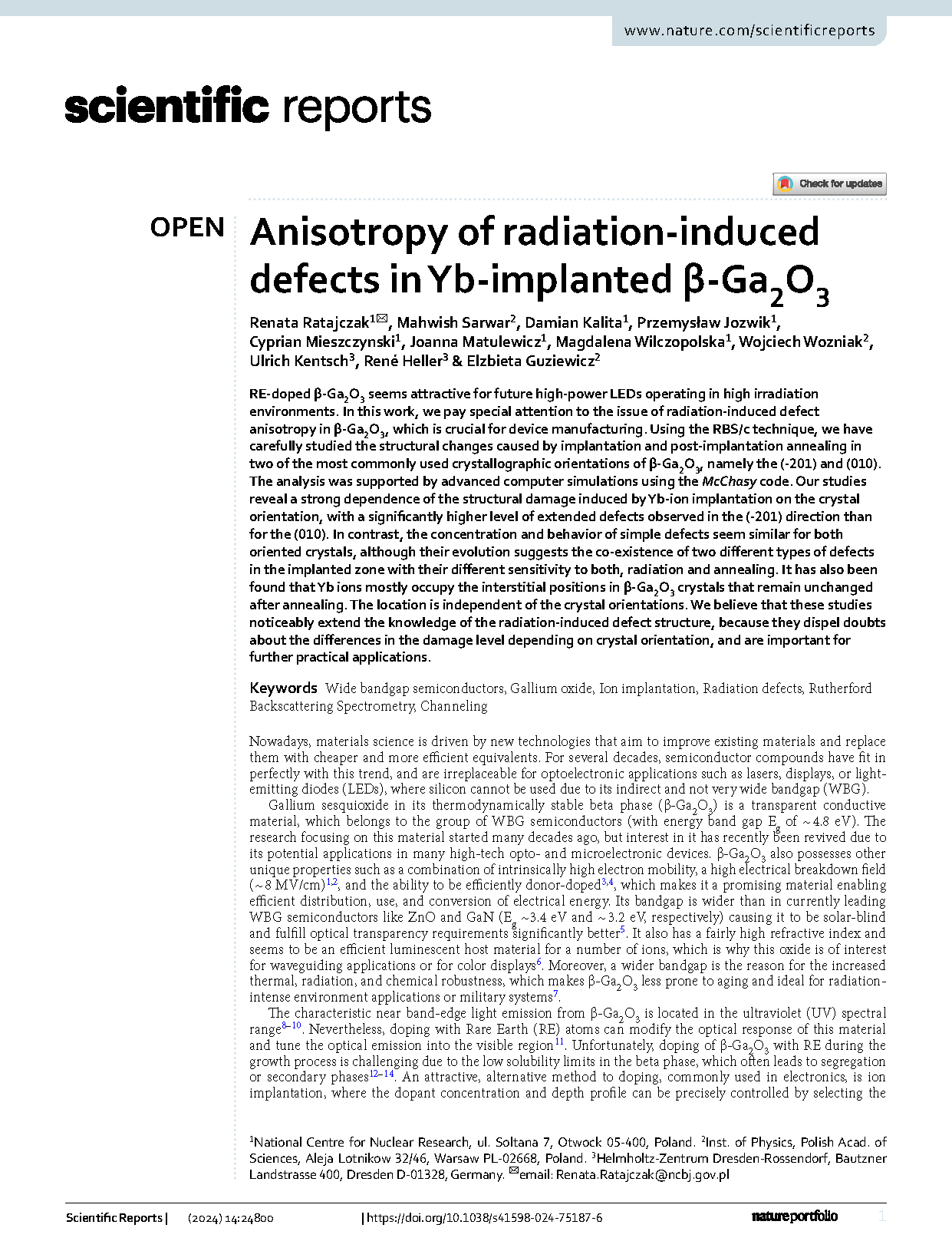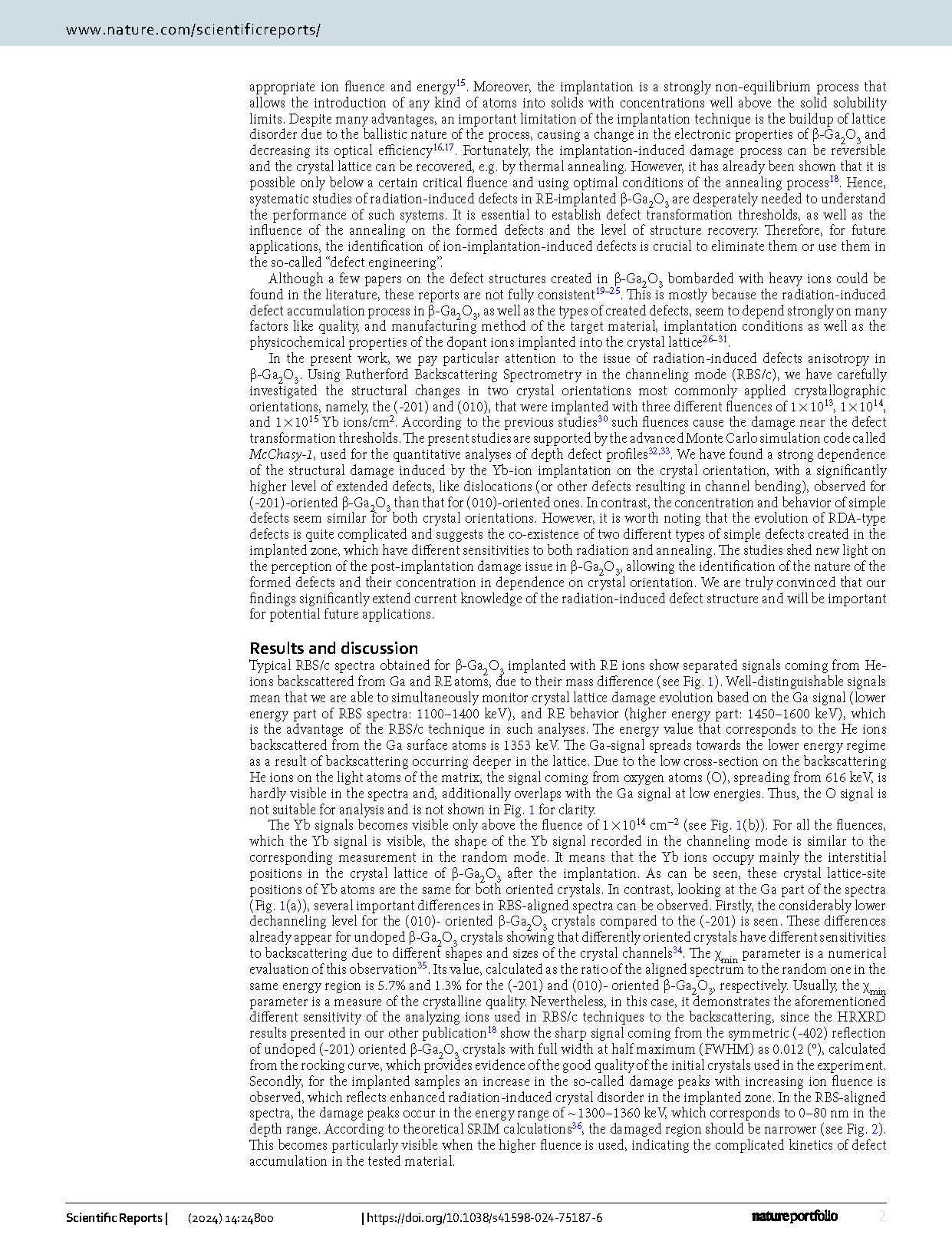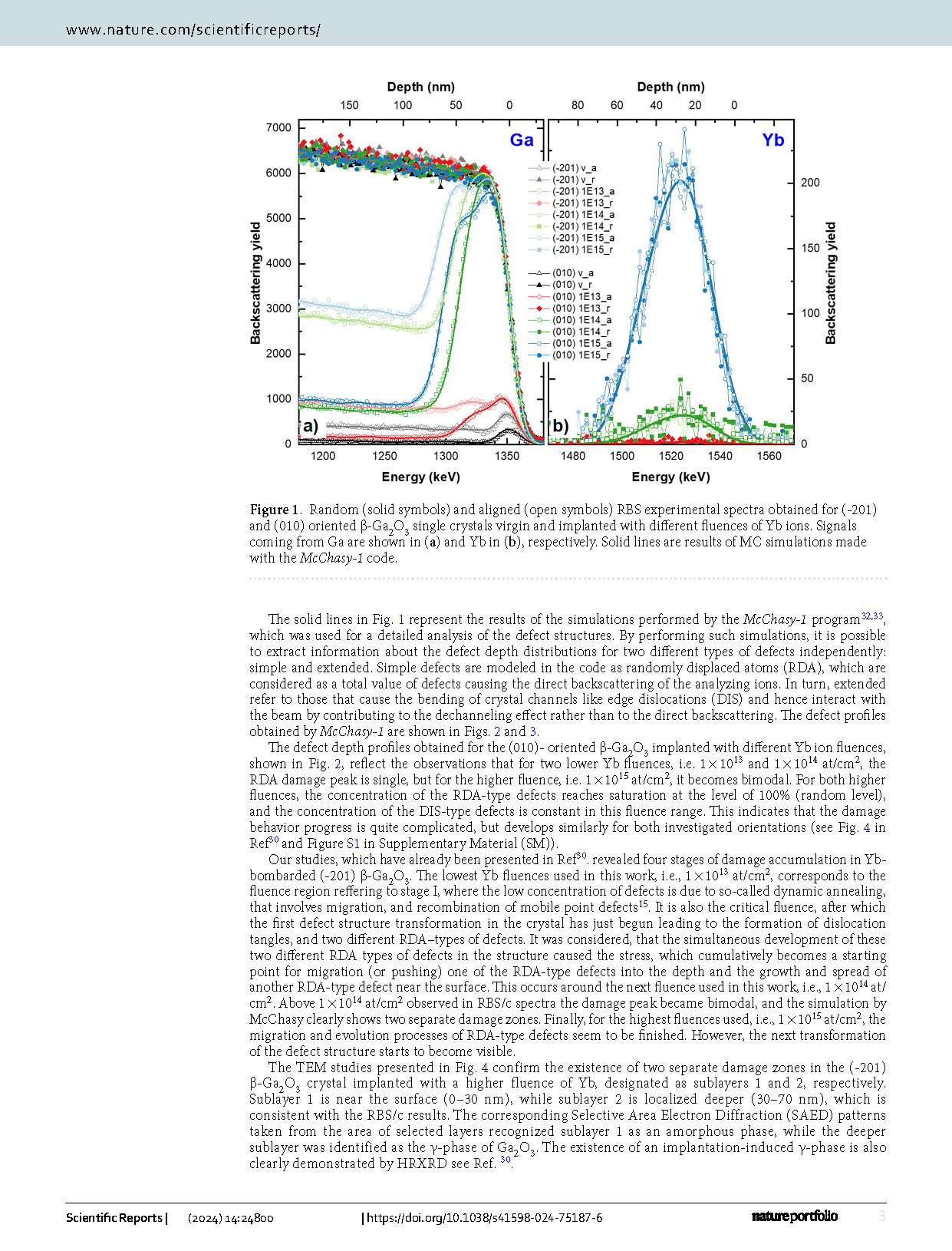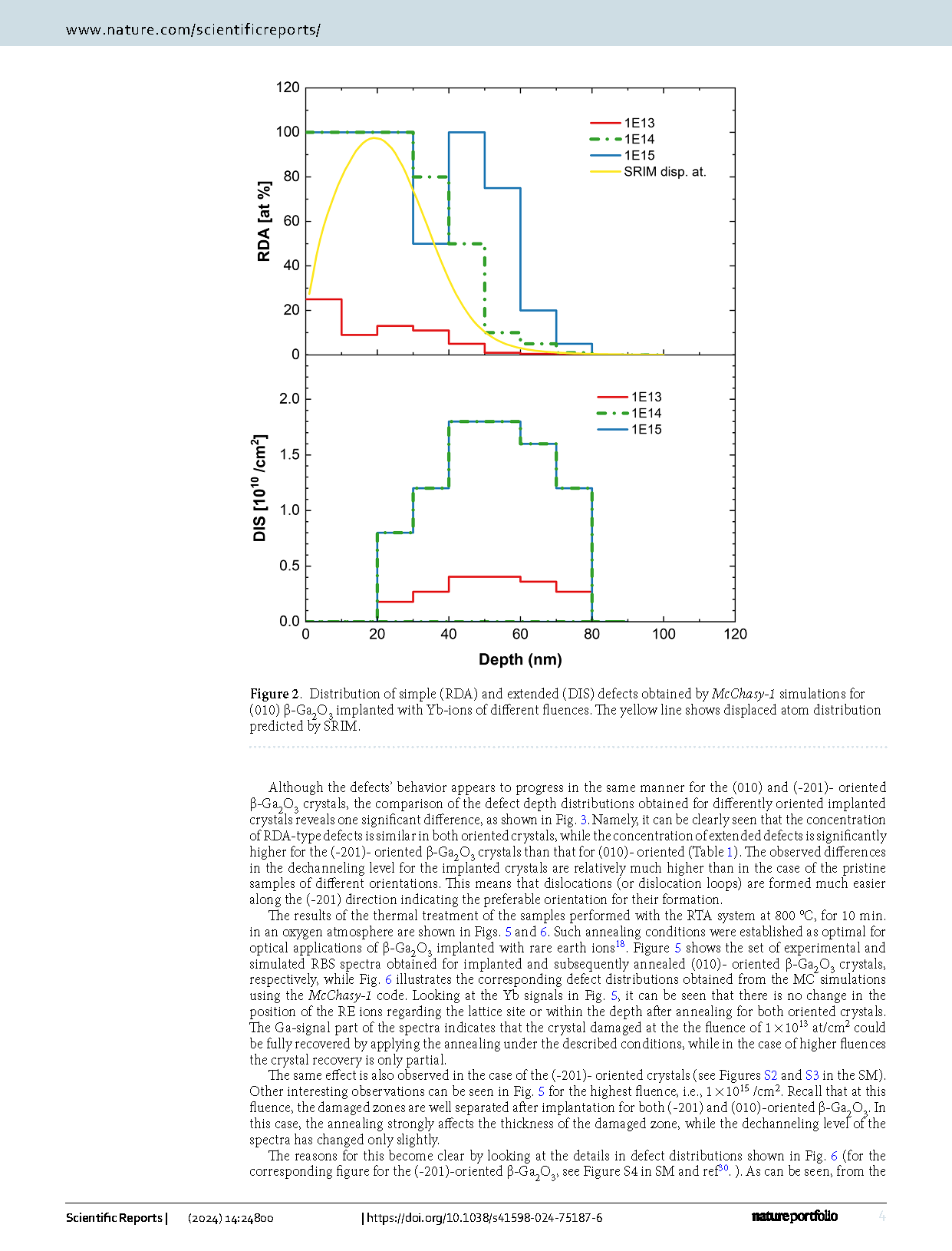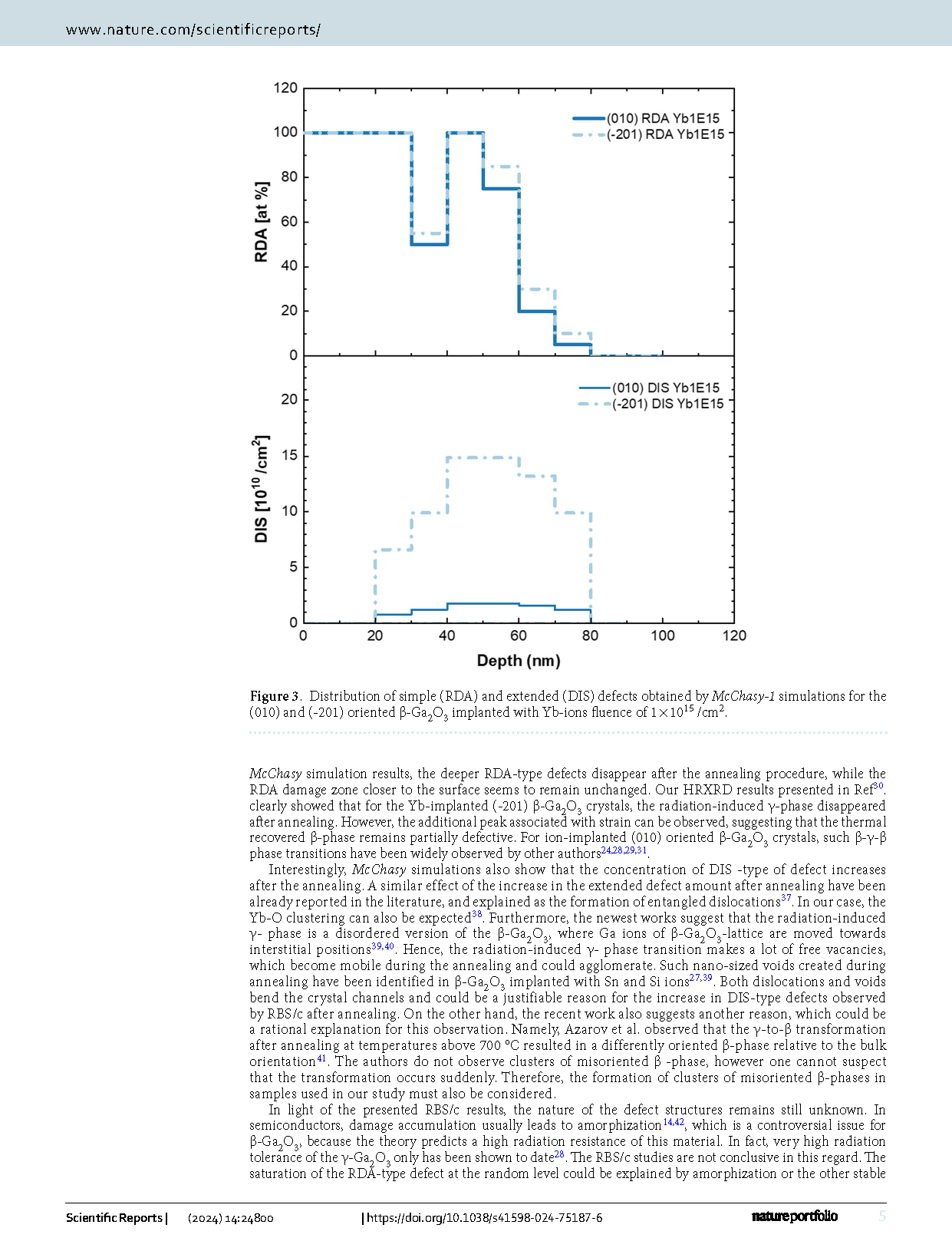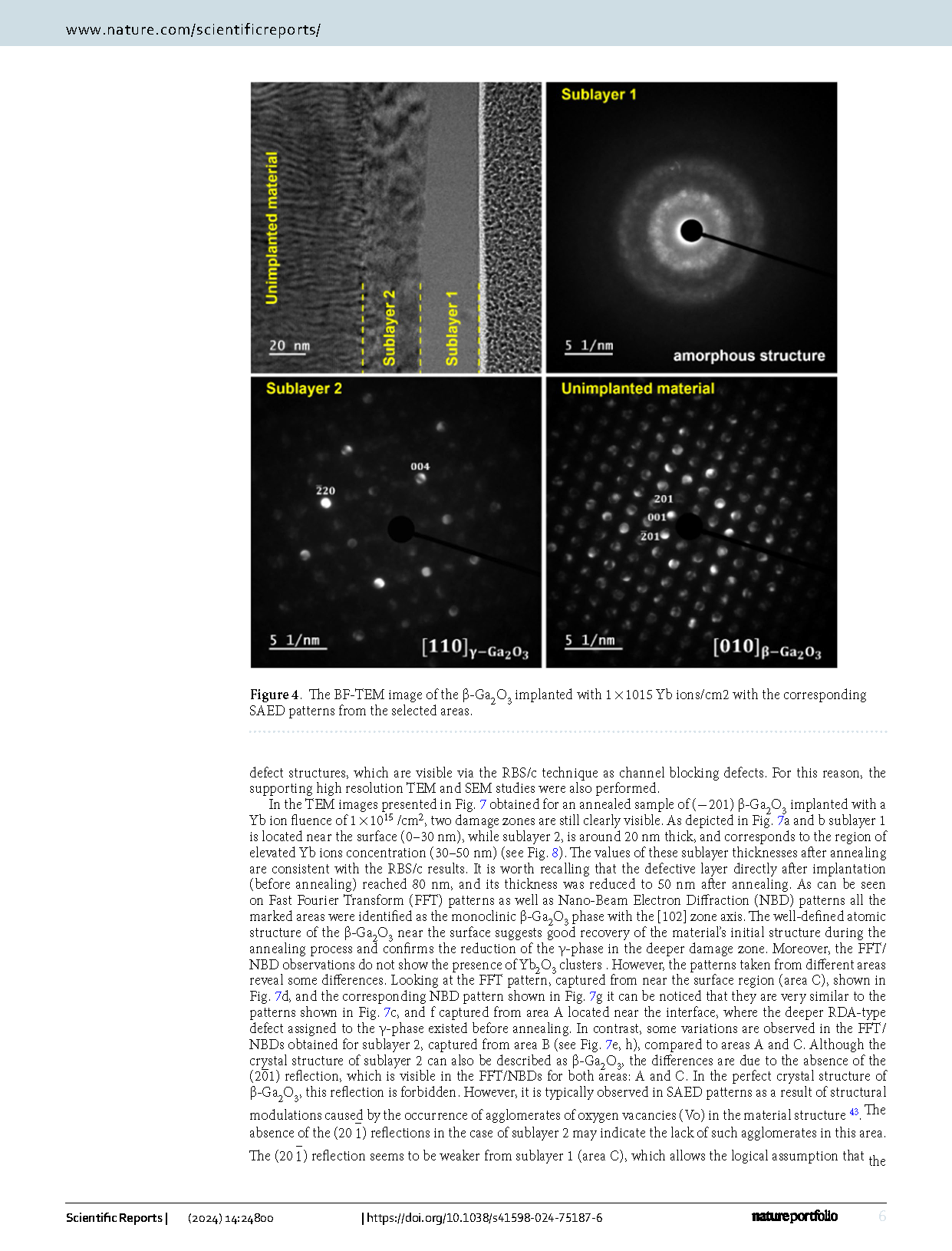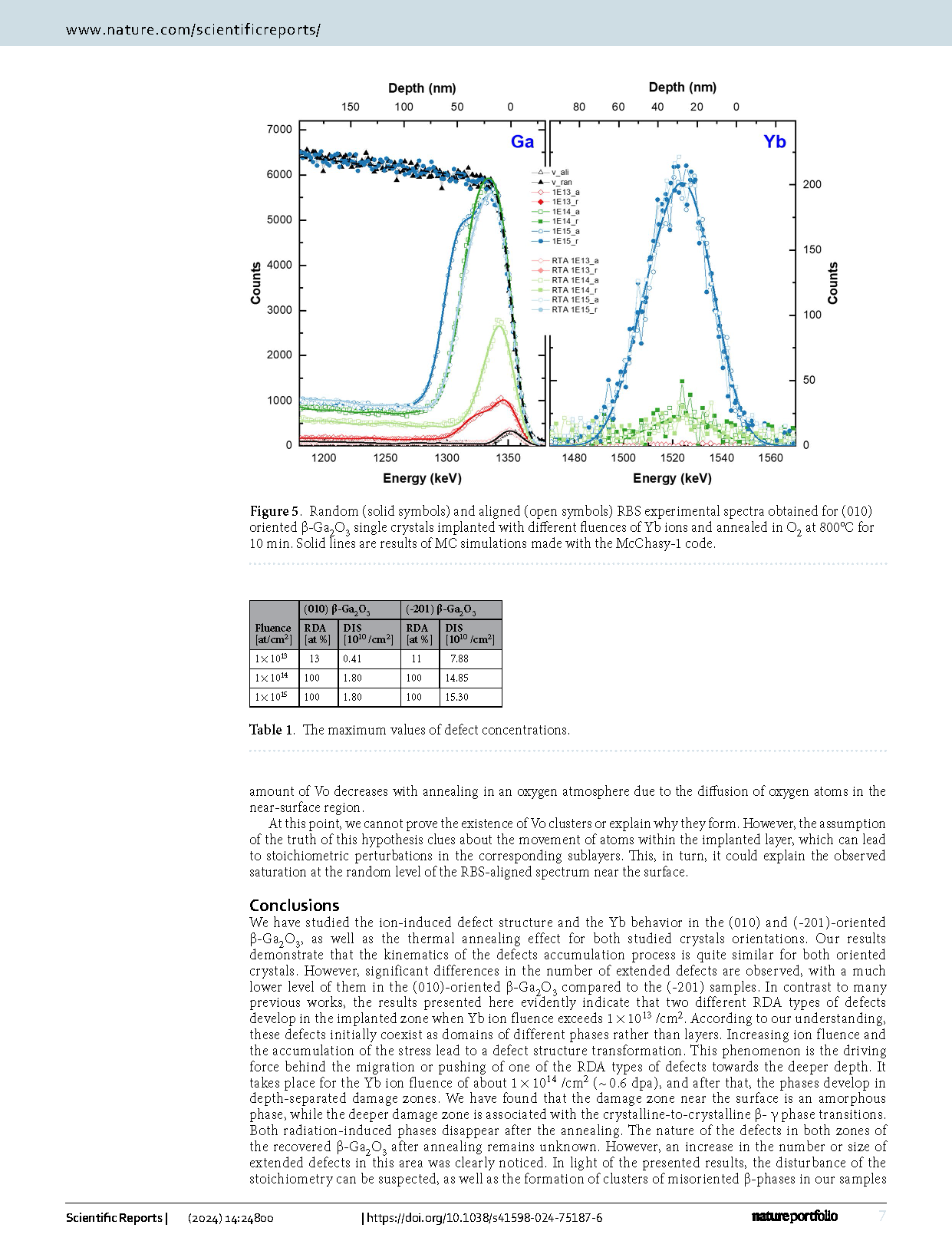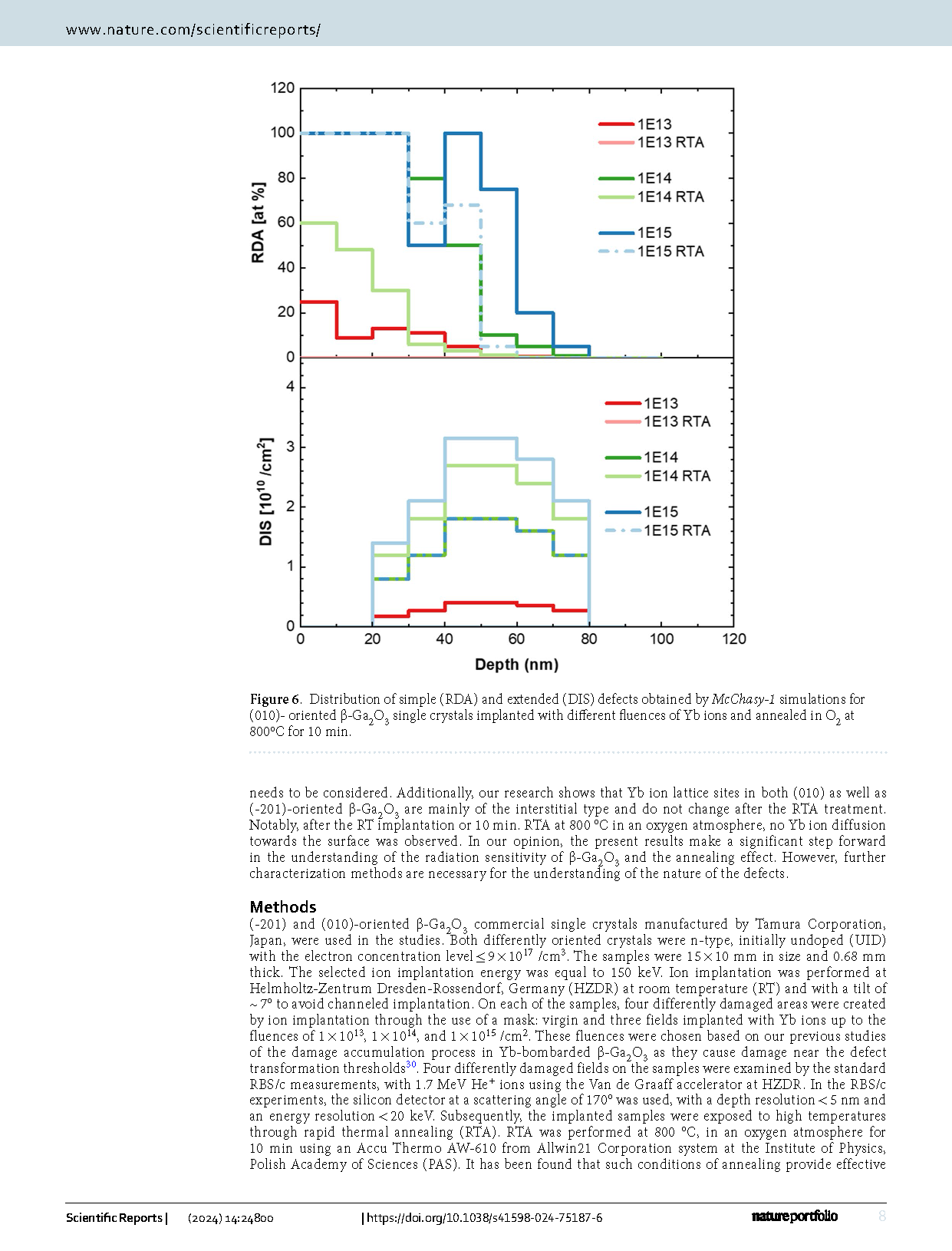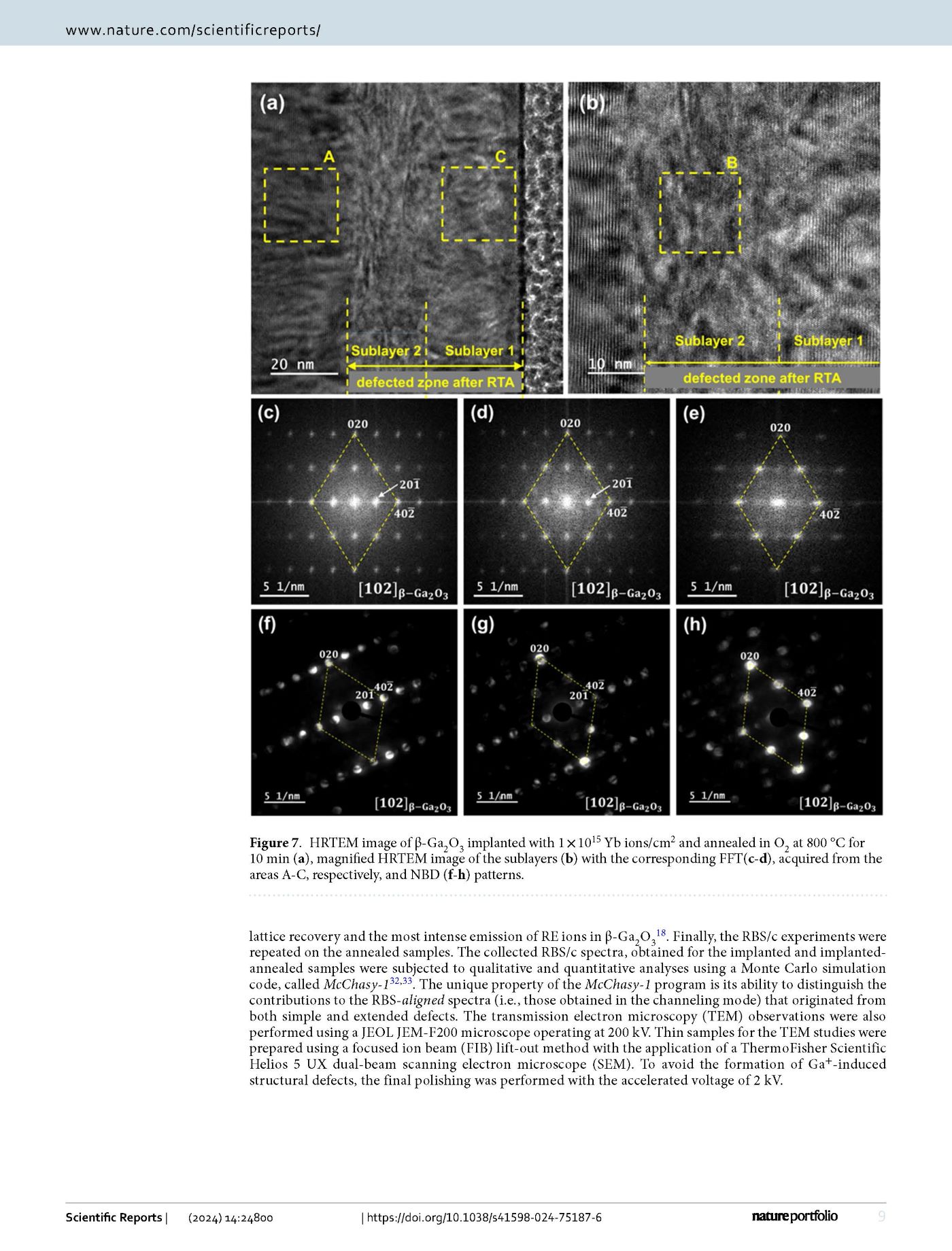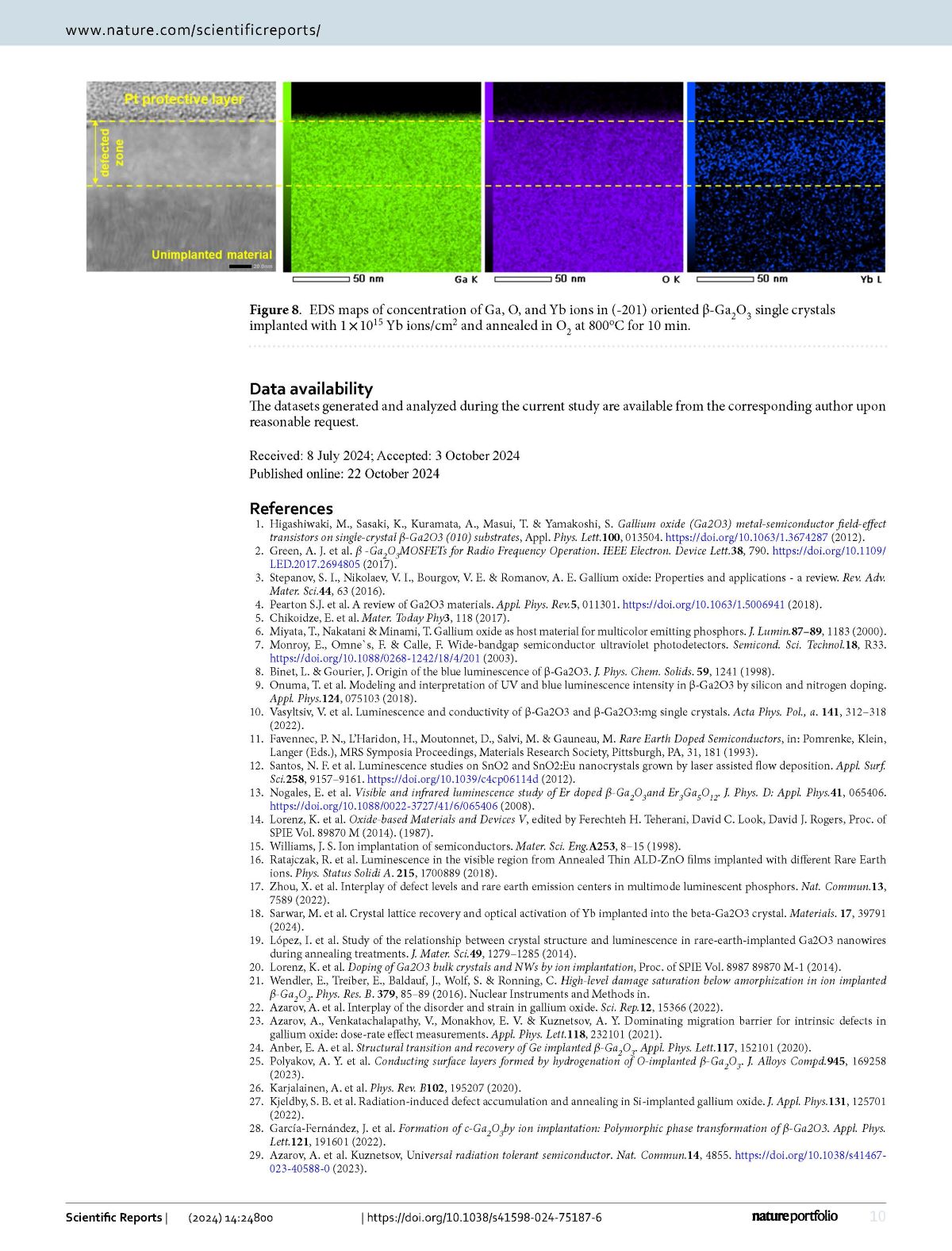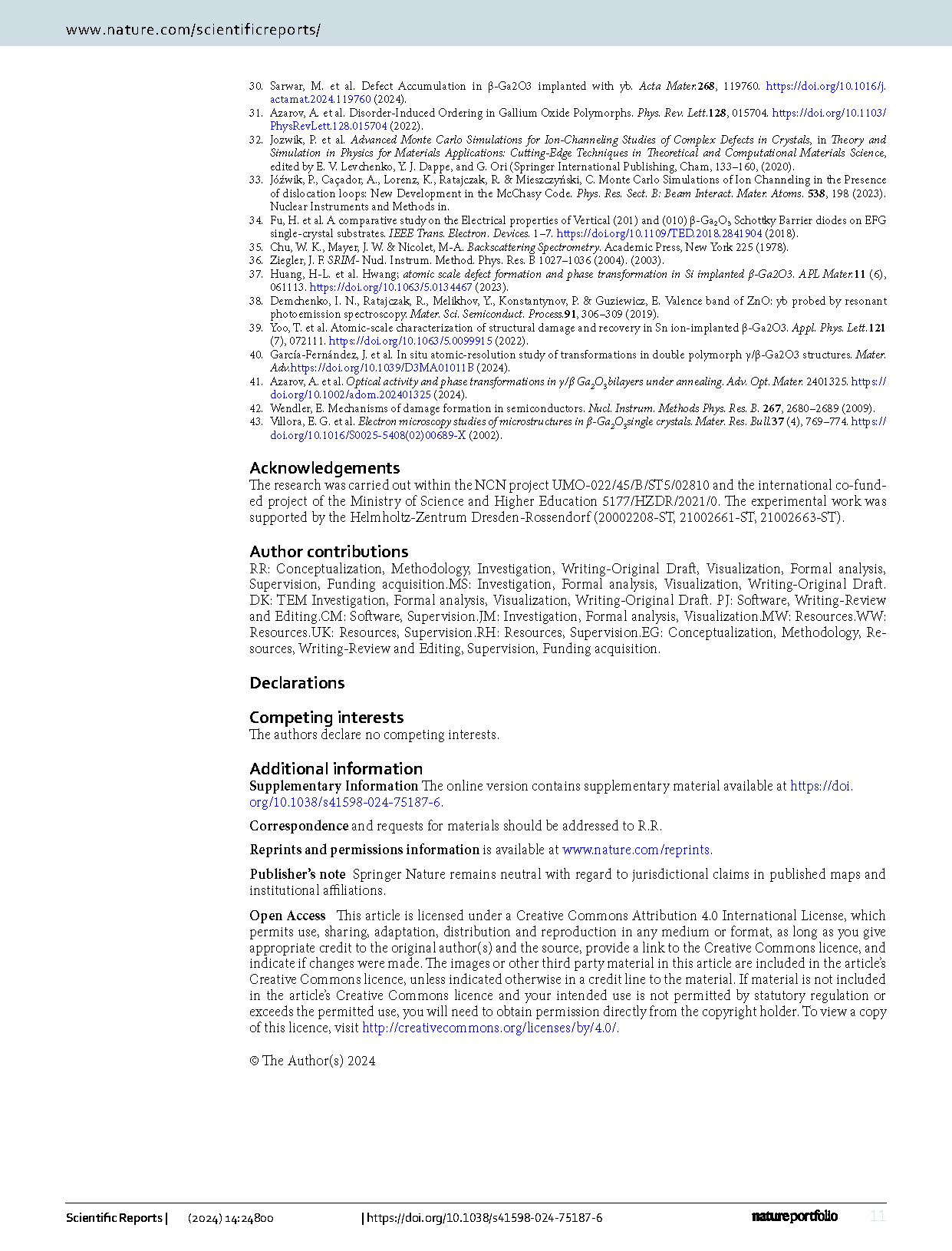
【International Papers】Anisotropy of radiation-induced defects in Yb-implanted β-Ga₂O₃
日期:2024-12-24阅读:517
Researchers from the National Centre for Nuclear Research, Poland have published a dissertation titled " Anisotropy of radiation-induced defects in Yb-implanted β-Ga2O3" in Scientific Reports.
Abstract
RE-doped β-Ga2O3 seems attractive for future high-power LEDs operating in high irradiation environments. In this work, we pay special attention to the issue of radiation-induced defect anisotropy in β-Ga2O3, which is crucial for device manufacturing. Using the RBS/c technique, we have carefully studied the structural changes caused by implantation and post-implantation annealing in two of the most commonly used crystallographic orientations of β-Ga2O3, namely the (-201) and (010). The analysis was supported by advanced computer simulations using the McChasy code. Our studies reveal a strong dependence of the structural damage induced by Yb-ion implantation on the crystal orientation, with a significantly higher level of extended defects observed in the (-201) direction than for the (010). In contrast, the concentration and behavior of simple defects seem similar for both oriented crystals, although their evolution suggests the co-existence of two different types of defects in the implanted zone with their different sensitivity to both, radiation and annealing. It has also been found that Yb ions mostly occupy the interstitial positions in β-Ga2O3 crystals that remain unchanged after annealing. The location is independent of the crystal orientations. We believe that these studies noticeably extend the knowledge of the radiation-induced defect structure, because they dispel doubts about the differences in the damage level depending on crystal orientation, and are important for further practical applications.
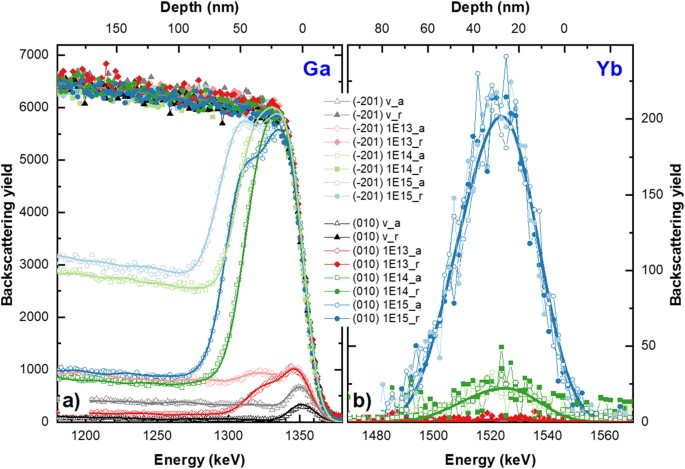
Figure 1. Random (solid symbols) and aligned (open symbols) RBS experimental spectra obtained for (-201) and (010) oriented β-Ga2O3 single crystals virgin and implanted with different fluences of Yb ions. Signals coming from Ga are shown in (a) and Yb in (b), respectively. Solid lines are results of MC simulations made with the McChasy-1 code.
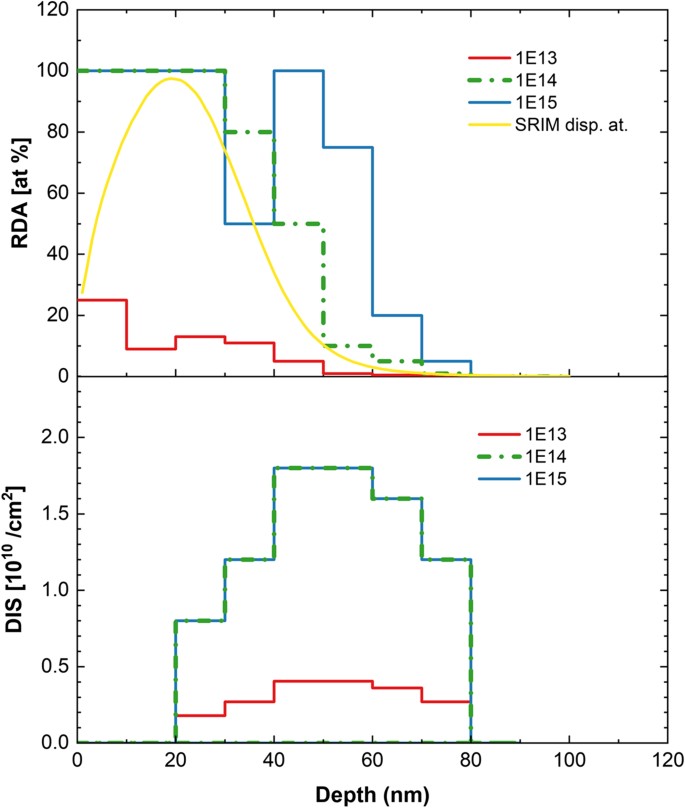
Figure 2. Distribution of simple (RDA) and extended (DIS) defects obtained by McChasy-1 simulations for (010) β-Ga2O3 implanted with Yb-ions of different fluences. The yellow line shows displaced atom distribution predicted by SRIM.
DOI:
doi.org/10.1038/s41598-024-75187-6
